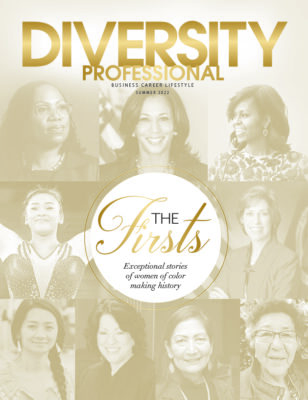MOVING THE NEEDLE: TAKING DATA-DRIVEN STEPS TO TRANSFORMING DEI IN CONSTRUCTION
Critical roles of leadership in ensuring positive impact on workforce and communities.
The construction industry has historically fallen short on diversity, equity, and inclusion (DEI) standards and practices. The solution to this long-standing problem, however, has been right under our noses—a trove of underutilized data illustrating, in fine detail, the makeup of our workforce and how those idiosyncrasies influence our industry.
It is imperative that, as leaders within the business, we recognize our critical role in ensuring that the decisions we make positively impact our workforce and the communities we serve. These decisions cannot be accurately informed without utilizing industry data—which not only reveals the nuances of our workforce—but also the MBE and WBE (minority and women business enterprise) participation among our contractors and subcontractors. We cannot have an industry that prioritizes DEI without recognizing the need to increase MBE and WBE inclusion across the board. When leaders take the time to scrutinize this readily available but often underused information, they will find themselves poised to enact positive change from the jobsite to the boardroom.
It’s important to note that we cannot be weak of heart when following the numbers. We must assess our own efforts with as keen an eye as we would our competitors. We are all in this fight for equity together and we must hold ourselves accountable for the sake of everyone’s success. The more equity we establish, the more shared victories we will secure. We at Clayco recently took a hard look inward to see where we could bolster our DEI efforts. After this reflection, we recognized the needle we were uniquely positioned to move was the talent and owner diversity in the real estate, design, engineering, and construction industry.

To fully understand our notable DEI disparities within the Chicagoland area, Clayco leadership worked with a partner organization to conduct an industry and demographic study. This allowed us to understand the makeup of the market so that we could employ specific tactics on how to best ensure the inclusion of MBE and WBE firms across jobsites. This was not done to meet an external compliance requirement—but to better set our own internal equity standards. Clayco found its needle for the Chicagoland area and is moving it by following the numbers.
These opportunities are not just limited to Clayco. Our broader industry has both the influence and ability to enact change. We also have the responsibility to better understand the most up-to-date and accurate makeup of our workforce. Reliable data can then be used to better set compliance standards, pinpoint which market needs the most urgent attention, provide a stronger sense of the rate at which our workforce is growing, and which demographics need strengthening. But it is not enough to wait for governing bodies to mandate such informative research—we must take the responsibility on ourselves. It’s important to note, however, that other policymakers can lay the groundwork for us to build on.
The city of St. Louis, for example, where Clayco was founded, was one of the first municipalities with an ordinance setting specific goals for MBE and WBE participation on jobsites. For over 20 years, St. Louis mayors have upheld an executive order prioritizing availability and utilization of those diverse businesses. In 2019, St. Louis was also one of the first cities to recognize that MBE and WBE qualifications were not always enough in terms of equitable inclusion. The recommendation was made to begin breaking out compliance standards by ethnicity, creating penalties for when the established goals were not achieved. This is a scalable, data-oriented approach that can be adopted by small businesses, large corporations, and municipalities alike. DEI data helped St. Louis move their needle toward higher standards and stronger inclusion of diverse firms across the city and continues to do so.
From our jobsites to our offices to the organizations we partner with, we must understand how the industry is growing and where more support is needed. Additionally, as we expand our companies into new regions, we must ensure we are individualizing our compliance standards to the corresponding demographics. In the Phoenix market, a region Clayco has recently begun expanding into, we are seeing a large increase in total population—but a Black population hovering at just 7%. Now, the onus is on our leadership to understand how to formulate equitable compliance standards based on the numbers. This means recognizing that MBE and WBE inclusion on jobsites may require a heartier effort than what is needed to meet DEI standards in other markets with a larger ethnically diverse population. In Charlotte, as a comparison, 60% of our workforce is made up of people of color. This data point influenced how we considered incorporating MBE and WBE partners into local projects.
In every market, there is a needle to be moved. As we look to the future of construction, it is imperative the leaders within our industry utilize the data accessible to them, force themselves to have difficult conversations, and understand where, when, and how to act on these issues if we are to have a more diverse, equitable, and inclusive industry. The data will show us the way, but it’s the people who make the difference.









